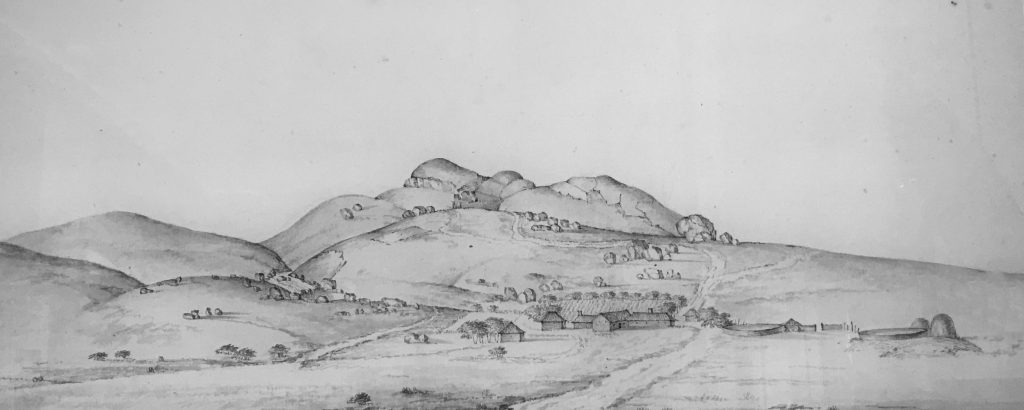
In 1692 Heinrich Muller, a European colonist from Basel, was allotted the first farm in the area and named it Keerweder (meaning, “turn back”).
The Huguenots who settled at the Cape from April 1688 onward were allotted farms in Drakenstein, on the Cape Town side of the Berg River. They became dissatisfied with the quality of the soil however, and applied to Governor Simon van der Stel for permission to obtain better farms. He agreed to this and on 18th October, 1694 the following nine farms were allocated to them in the Oliphantshoek area:
La Dauphine to Estienne Niel;
Bourgogne to Pierre de Villiers;
La Bri to Jacob de Villiers;
Champagne to Abraham de Villiers;
La Motte (at present Bo La Motte) to Jean Jourdan;
Cabrière to Pierre Jourdan;
La Cotte to Jean Gardiol;
La Terra de Luc to Matthieu Amiel; and
La Provence to Pierre Joubert.
Most of the original farms were 60 morgen in extent, and were situated along the Franschhoek River, a tributary of the Berg River. Many were named after the places from which the Huguenots originated and were later sub-divided, thereby creating more farms.
In 1713 this area was first referred to as de france hoek (the French corner) because it was inhabited mainly by French speakers. On a map (drawn by L S de la Rochette in 1795) the name is given as FRANS HOECK or la Petite Rochelle. In 1805 the Commissioner-General of the Batavian Republic at the Cape, J AU de Mist, named the new field-cornetcy FRANSCHHOEK. The name also applied to the congregation established in 1845 as well as to the Municipality which came into being in 1881
The Official Website of the Huguenot Memorial Museum © Copyright 2023. All rights reserved | Website by janeparkfeltdesigns.com